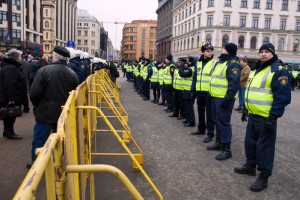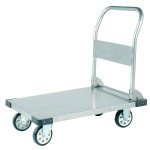Driving under the influence of alcohol is a serious offence all over the world. And if you are caught, the consequences are serious.
 You might have noticed the advertisements in the television and newspapers that warns us to stay controlled while driving. But how easily do we ignore them? Thinking that, a large glass of beer won’t really matters. Think again. According to drink driving solicitors, even a minute amount of alcohol can make you lose control. So the safe amount, if you are driving, is to stay sober.
You might have noticed the advertisements in the television and newspapers that warns us to stay controlled while driving. But how easily do we ignore them? Thinking that, a large glass of beer won’t really matters. Think again. According to drink driving solicitors, even a minute amount of alcohol can make you lose control. So the safe amount, if you are driving, is to stay sober.
According to the law, the legal limit of alcohol is 36 micrograms per one hundred milliliters of breaths which can easily be detected if you are stopped by the authorities. You can also be stopped by the authorities if they doubt that you are driving under the influence of alcohol. They can also stop you if you are crossing the speed limit.
Don’t think that you can befool them by demanding a urine or blood test and hope that result will be more favourable. It is also an offence to refuse to give a breathing test unless you have a very solid reason such as a medical problem that makes it really difficult for you to take a long breath. So it is better to call drink driving lawyers in such circumstances.
When you take the breath test, the result you can pray for is less than 40 micrograms. However, if the result is between 40 to 45 micrograms, you can be given the option of urine and blood test. If you are under the influence of alcohol, you will be charged but you will not be arrested. A policeman will escort you to your home. However, you will have to appear in the court and the maximum punishment you will get is driving ban and a heavy fine. You could also be sent to the jail. If you are caught twice or thrice in a year, expect no less than a four-year ban.
If you are banned from driving or you lose your license. It is not just the matter of finding a friend to drive you to the pub. Even losing your livelihood is not considered enough reason to avoid driving ban. The authorities see that as the consequences of your action and will show you no mercy at all. So the only way out in such circumstances is to find the experienced drink driving attorneys.
And it is not really worth driving if you are under the influence of alcohol.

 Relocating to a new office surrounding can be demanding however, with removals and office services in Sydney, everything is made easy especially when you hire a dependable and reliable removal company. However, there are things that need to consider such as coverage, as a removalist Northern Beaches Company may offer the best price and coverage when moving within Northern Beach areas. Here are other things that you should take in consideration in order to get the full benefits of hiring office removalist in Sydney.
Relocating to a new office surrounding can be demanding however, with removals and office services in Sydney, everything is made easy especially when you hire a dependable and reliable removal company. However, there are things that need to consider such as coverage, as a removalist Northern Beaches Company may offer the best price and coverage when moving within Northern Beach areas. Here are other things that you should take in consideration in order to get the full benefits of hiring office removalist in Sydney. Practically all kinds of fabric can be used for upholstery, from the cool and comfy cotton to the warmest of wools. Whatever fabric you do decide to use, see to it that you go for that which is high in quality at all times – despite the fact that this is a bit (or sometimes way) more expensive than low-quality ones.
Practically all kinds of fabric can be used for upholstery, from the cool and comfy cotton to the warmest of wools. Whatever fabric you do decide to use, see to it that you go for that which is high in quality at all times – despite the fact that this is a bit (or sometimes way) more expensive than low-quality ones. Moving objects or items of considerable volume and weight should be done with the use of simple machines in order to avoid any untoward incident such as injuries to yourself or damage to the item being moved or the objects within its path.
Moving objects or items of considerable volume and weight should be done with the use of simple machines in order to avoid any untoward incident such as injuries to yourself or damage to the item being moved or the objects within its path.
 This is just one of the very best inventions that may hold the key to better health. A water ionizer is a gadget or contraption that has the ability to refigure the molecular structure water has that eventually results into a healthier form of drinking water. The end product is called alkaline water
This is just one of the very best inventions that may hold the key to better health. A water ionizer is a gadget or contraption that has the ability to refigure the molecular structure water has that eventually results into a healthier form of drinking water. The end product is called alkaline water
 Are you seeking breast enhancement or enlargement and you not sure where or who to turn to? Well, worry not, Australia has some of the best and most recommended plastic surgeons. Dr Eddy Dona is one of them and definitely one of the most sought plastic surgeons in Australia today. He has specialized in plastic and reconstructive surgeon with extensive years of experience that has led to exceptional results.
Are you seeking breast enhancement or enlargement and you not sure where or who to turn to? Well, worry not, Australia has some of the best and most recommended plastic surgeons. Dr Eddy Dona is one of them and definitely one of the most sought plastic surgeons in Australia today. He has specialized in plastic and reconstructive surgeon with extensive years of experience that has led to exceptional results.